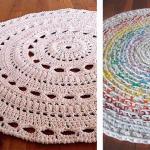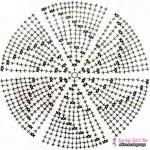Burning of cotton fabrics. How to determine the composition of yarn by burning
From fibrous composition depends on the appearance, elasticity of tissues, cutting resistance, fraying, extensibility, ability to iron and pull back, choice of WTO mode.
Depending on the fibrous composition, fabrics are divided into homogeneous, heterogeneous, mixed and mixed-heterogeneous.
HOMOGENEOUS fabrics consist of the same fibers, for example wool, cotton, silk, etc.
HETEROGENEOUS fabrics consist of thread systems of different types of fiber, for example, warp - cotton, weft-wool; warp - viscose, weft - acetate.
MIXED fabrics are fabrics that contain different fibers in the warp and weft, mixed during the spinning process. For example, the warp and weft are wool with lavsan. Mixed fabrics include fabrics made from twisted non-uniform threads.
MIXED-HONOGENEOUS - these are fabrics that have one system of threads that is uniform, and the second from a mixture of fibers. For example, the warp is cotton, and the weft is a mixture of wool with staple viscose fiber. Based on the presence of more valuable fiber, heterogeneous, mixed and mixed-heterogeneous fabrics are usually called half-wool, half-linen, half-silk. Half-silk fabrics usually have a silk warp and a cotton weft. Pure wool fabrics can contain up to 10% chemical fibers.
DETERMINATION OF FIBROUS COMPOSITION OF TISSUE
You can determine the composition of the tissue using the senses: touch, vision, smell in the following sequence:
- By appearance
- Touch and wrinkleability
- By type of warp and weft threads
- According to the nature of fiber combustion
When determining the fiber composition, first of all, you need to pay attention to the color, gloss, thickness, and density of the fabric. Then work on creasing: gather the fabric into folds and squeeze it tightly in your fist, after 30 seconds release it and smooth it with your hand. Next, consider the warp and weft threads. Each thread must be examined separately. Then trace the combustion pattern of the fibers. Burning tissue with an “angle” leads to erroneous results.
Signs of determining the composition by appearance:
Cotton fabrics are usually thinner than linen; cotton gives them a special matte finish, while linen fabrics have a shine. Linen fabrics are often natural color: severe linen fabrics have a grayish or greenish tint. Raw cotton fabrics have a yellowish tint.
Wool fabrics recognized by the woolly surface, piled in cloth fabrics and with an open weaving pattern in combed fabrics; The surface of fine cloth fabrics is smooth, while coarse hairs are visible on coarse cloth fabrics. Wool-blend fabrics mixed with cotton are characterized by some fading.
Fabrics from natural silk Easily recognizable by their thin thickness, smooth surface and soft, deep shine.
Based on the nature of creasing and the feel of fabrics, they are determined as follows:
Linen always gives the impression of coldness and rigidity to the touch, cotton - softness and warmth; Linen fabrics, as a rule, are heavier than cotton and have almost no stretch either along the warp or weft.
Pure wool fabrics, when crumpled, either do not form wrinkles, or wrinkles easily disappear; on fabrics mixed with viscose or staple fiber, angular folds remain that do not disappear or disappear slowly.
Fabrics made from natural silk are light, soft to the touch and wrinkle relatively little; artificial silk fabrics are heavier, harsh to the touch and, when crumpled, leave folds that are difficult to straighten out.
To determine the composition of the fabric by the type of warp and weft threads, you need to remove 2-3 threads from each system, put them side by side and compare the appearance. If the yarn is twisted, you need to unwind it into separate threads and look through each thread.
Wool is recognized by its peculiar crimp and slight sheen; cotton by its matte, thin, short fibers; staple fiber by its thin, longer, non-crimped fibers with increased shine.
Determination of the fibrous composition by the nature of the rupture of the warp and weft threads:
When a cotton thread breaks, a fluff of short, very thin fibers forms at its end; at the end of a torn linen thread, a tassel is formed from straight, longer, coarser fibers of unequal thickness.
The wool fibers at the broken end of the yarn are recognized by the presence of crimp; if the yarn is mixed (with a mixture of cotton or staple), the cotton differs in its short, thin matte fibers, the staple fibers are long, shiny, as if flaccid.
When a thread made from natural silk breaks, the individual fibers remain connected, while threads made from artificial and synthetic fibers, especially with a slight twist, the fibers at the end fly apart, forming a fluffy tassel that “sticks to the fingers”
The strength of natural silk does not change after soaking, the strength of viscose and copper-ammonium fibers after soaking decreases by 50%, and the strength of acetate decreases by 30%.
By the nature of the burning of fibers, the fibrous composition of fabrics can be determined quite accurately:
- Black yarn sinteres in the flame, but does not burn when removed from the flame. A black cake forms at the end of the thread. The smell of burnt feathers or horn. If wool yarn contains 10% plant impurities, then a luminous ember is formed behind the sintered ball, which quickly goes out, leaving a layer of gray ash. If the yarn contains 15-20% impurities, then 1.5-2 cm of thread burns, then the flame goes out. If the yarn contains more than 25% plant impurities, then the entire thread burns out and loose gray ash remains. If wool yarn contains nitron or lavsan, then it burns with a yellow, smoky flame, forming a hard skeleton of the thread, the smell of a feather. If the yarn contains up to 10% nylon, it burns like pure wool, but a ball remains at the end, which does not rub well.
- Cotton fibers burn with a yellow flame and burn completely, forming gray ash. The smell of burnt paper.
- Linen burns just like cotton.
- Natural silk burns similarly to wool.
- Rayon fibers burn faster than cotton.
- The acetate fiber burns quickly with a yellow flame, leaving a melted ball at the end.
- Nylon fibers burn with a bluish flame, forming a brown melted ball.
- Lavsan melts, then slowly burns with a yellow, smoky flame.
- Nitron, acrylic (polyacrylonitrile fibers) melt and burn with a yellow flame with flashes.
In the laboratory method of determining the fibrous composition of tissues, microscopes and chemical reagents are used. To determine the composition using this method, you need to have a good knowledge of the structure of the fibers and their chemical properties. The laboratory method gives a more accurate result than the organoleptic one, but in practice it is more often used last method as more accessible.
Loose with protruding fibers. The fibers are crimped.
Actions of the reagents: From vegetable oil It's getting dark.
Character of combustion, melting: Burns with a fast, even flame. The ash is light gray, crumbling.
Burnt paper.
Linen fabric
 Physical properties and appearance: More dense than cotton. The fibers are longer and smoother.
Physical properties and appearance: More dense than cotton. The fibers are longer and smoother.
Actions of the reagents: Vegetable oil makes it transparent.
Character of combustion, melting: Same as for cotton.
Odor when burning, melting: Same as for cotton.
Wool
Physical properties and appearance: Rough, elastic fibers.
Actions of the reagents: Dissolves in alkalis.
Character of combustion, melting: It burns poorly, forming a dense sintered ball.
Odor when burning, melting: Burnt feather.
Natural silk
 Physical properties and appearance: Smooth, shiny fiber that crunches when crushed.
Physical properties and appearance: Smooth, shiny fiber that crunches when crushed.
Actions of the reagents: Dissolves in alkalis.
Character of combustion, melting: Same as for wool.
Odor when burning, melting: Same as for wool.
Viscose
Physical properties and appearance: Smooth shiny fiber.
Actions of the reagents: When wetted with sulfuric acid it turns red.
Character of combustion, melting: Same as for cotton.
Odor when burning, melting: Same as for cotton.
Acetate wool or silk
Physical properties and appearance: Smooth shiny fiber.
Actions of the reagents: When moistened with acetone, it dissolves and becomes similar to glue.
Character of combustion, melting: First it melts and then burns, forming a brittle balloon.
Odor when burning, melting: Sour.
Lavsan
 Physical properties and appearance: Very similar to wool.
Physical properties and appearance: Very similar to wool.
Actions of the reagents: Not wetted by water.
Character of combustion, melting: Melts without flame, forming a solid ball.
Odor when burning, melting: Without smell.
Capron
Physical properties and appearance: Very similar to silk, but crunchy.
Actions of the reagents: Dissolves in acid.
Character of combustion, melting: Melts without flame, forming a soft ball.
Odor when burning, melting: Without smell.
The article is based on material from the book "Housekeeping Secrets. A Universal Reference Book", authors B.V. Berkov, G.I. Berkova, PUBLISHING HOUSE “Ural LTD”, MOSCOW 1972.
|
Fiber behavior during combustion and type of residue |
Cotton, linen, viscose, copper-ammonia |
Wool, silk |
Acetate fiber |
Capron |
Lavsan |
Chlorine |
Nitron |
||
|
Behavior when approaching a flame |
The fiber does not melt and does not change its shape |
The fiber melts and twists away from the flame |
The fiber melts without shrinking |
The fiber melts and shrinks away from the flame |
|||||
|
Behavior when introduced into the flame |
Burns without melting |
Burns slowly with melting |
Burns with melting |
Burns slowly with melting |
Burns with melting |
||||
|
Behavior when leaving the flame |
Continues to burn without melting |
Burns very slowly and goes out on its own |
Burns very slowly and goes out on its own |
Continues to burn with melting |
|||||
|
Type of residue (ash) after combustion |
Ashes light gray |
Fluffy, soft and black ash |
Black ball of irregular shape, easily crushed by fingers |
Round hard ball, not crushed by fingers |
Black ball of irregular shape, cannot be crushed by fingers |
||||
|
gray |
black color | ||||||||
|
Odor when fiber burns |
The smell of burnt paper |
The smell of burnt horn |
Smell of acetic acid |
The smell of sealing wax |
Chlorine smell | ||||
Cotton
Properties of cotton. The properties of cotton are characterized by high strength, heat resistance, light resistance, average hygroscopicity and elongation, low elastic deformation, as a result of which cotton products are strongly wrinkled. Cotton has good resistance to alkali (mercerization). Under the influence of mercerization, the structure of cotton changes and its properties improve. When exposed to acids, the fiber is damaged, under the influence of water it swells and increases its strength. The abrasion resistance of cotton is relatively low, as a result of which products made from this fiber are characterized by low wear.
The natural color of cotton is white or cream; in some cases it can be beige, greenish and other colors. After mercerization, cotton fibers acquire significant shine and become silky. The fibers are soft and warm to the touch.
Recognition. The ignited cotton fiber burns with a bright yellow flame with luminous sparks, produces gray ash and emits a burnt paper smell. If the flame is extinguished, the fiber smolders intensely, emitting smoke.
Application. Due to its low cost, good appearance and quite satisfactory properties, cotton is widely used in the production of fabrics (linen, shirts, dresses, suits, towels), knitwear, sewing threads, etc.
Physicochemical characteristics. Flax fiber has many properties in common with cotton. For example, the effect on flax fiber of water, steam, alkalis, acids, oxidizing agents and light weather is approximately the same as on cotton fiber. There are also some features of the properties of flax fiber that appear under the indicated influences. Linen is more resistant to dilute acids than cotton. The light fastness of flax is slightly higher than the light fastness of cotton.
The hygroscopicity of flax fiber is higher than that of cotton fiber, which indicates its better hygienic properties.
Flax fiber has high thermal conductivity, so it is not used for making winter clothing fabrics.
The disadvantages of flax are low elongation and low elasticity of the fiber, as a result of which linen fabrics are strongly wrinkled and clothing is deformed, significant unevenness of technical fiber and yarn made from it in thickness and fiber stiffness, as a result of which the fabrics are not uniform enough and have little drape
Recognition. Flax fiber burns just like cotton, but smolders worse.
Application. Flax fiber is used primarily for the production of summer suit and dress fabrics, linen, men's shirts, tablecloths, towels, as well as technical fabrics (edging, canvas, etc.).
Kotonin- a cotton-like flax fiber obtained from short-fiber tow from scuff waste.
Wool fiber
Wool fiber has high hygroscopicity, good light resistance, elongation and elasticity. High elasticity makes wool products crease-resistant. Wool fiber's tensile strength, abrasion resistance and heat resistance are relatively low.
Recognition. When pure fiber is introduced into a flame, it burns, sintering into a dark ball. When the fiber is removed from the flame, combustion stops. Burning wool fiber emits a specific odor. pure wool yarn and mixed yarn burn differently: when introduced into the flame, pure wool yarn burns with the formation of a black influx (guardianship), with the spread of the smell of burnt horn or feather, when the yarn is removed from the flame, the combustion stops; when introduced into a flame, the mixed yarn burns with the formation of a flash, glowing ember, ash and odor, depending on the percentage of non-wool fibers; if there are up to 10% cellulose fibers in the yarn, weak independent combustion is observed with the formation of a glowing ember, but the flame quickly goes out; if there are 20-25% cellulose fibers in the yarn - slow burning with the formation of a sagging and glowing coal and the spread of a mixed smell of burnt paper and feather, but the flame does not pass through the entire thread, but goes out after 1-1.5 cm; if there is a large percentage of plant impurities in the yarn, the flame passes throughout the entire thread, there are almost no signs of wool burning, except for the smell
If cotton fibers are added to the mixture of wool, the shine of the fabric will decrease, an unpleasant fade will appear, the flatness of the fabric during felling will decrease, the tensile strength of the fabric will increase, its stretchability will decrease, and creasing will increase. V
The fabric's resistance to abrasion will decrease, wear resistance will decrease, and fabric shrinkage will occur more slowly when moistened, which will make it difficult to press.
If staple viscose fibers are added to the mixture of wool, then the fabrics, unlike fabrics with an admixture of cotton, acquire a slight shine, the tensile strength will increase slightly, and the elongation will decrease somewhat less, the fabrics will become heavy and have better drape. Fabrics made from semi-coarse and coarse wool will also acquire some softness.
Wool fabric produced with a content of 10% staple nylon fiber is characterized by greater abrasion resistance - 1.5–2 times compared to pure wool fabrics, which significantly increases their wear resistance. At the same time, tensile strength, elongation, and wrinkle resistance of the fabric increase, but rollability and weight decrease.
Adding lavsan or nitron to the wool mixture increases the heat resistance of fabrics, their porosity, tensile strength and elongation, reduces volumetric weight and shrinkage during rolling, soaking and wet-heat treatment, which makes the shrinking process difficult.
The use of lavsan in a mixture with wool helps to increase the abrasion resistance of the fabric, and consequently, greater wear resistance. Nitron fibers reduce the abrasion strength of the fabric and also somewhat reduce the elasticity of the fabrics.
Properties of natural silk. Natural silk has good hygroscopicity, quickly absorbs moisture and dries just as quickly. When wet, silk loses its strength to a small extent, is sensitive to heat in the same way as wool, and at elevated temperatures it becomes stiff and brittle; Acids and alkalis have approximately the same effect on silk as on wool.
The effect of light weather on silk leads to a significant decrease in its strength
Recognition. Silk burns in the same way as wool: slowly, emitting the smell of a burnt feather, forming a baked ball at the end of the thread.
Fabrics viscose silk They are distinguished by good smoothness, sharp or matte shine, good resistance to friction, strong creasing and shrinkage (and therefore require anti-crease and non-shrinking finishing), average drapability, good hygiene, and low heat-shielding properties. These fabrics can be ironed well with a hot iron and washed in neutral detergents or mild soap solutions.
Fabrics made from viscose silk are widely used as lining fabrics (twill, satin lining, etc.), dress fabrics (crepe marocain, taffeta, etc.), decorative fabrics, raincoat fabrics, as well as for outerwear (tartan, piqué, etc.) and underwear (crepe de Chine). , linen, etc.) linen.
In the sewing industry, the ability of viscose silk fabrics to slip, fray, move apart threads, and be cut through (with high fabric density and high thread twist) is taken into account.
Staple fabrics ( viscose) fiber Unlike fabrics made from viscose silk, they have some surface fluffiness, moderate shine, good softness and drape, and increased shrinkage.
Properties of viscose fibers. Viscose fibers are characterized by good hygroscopicity, light fastness, elongation, and quite satisfactory heat resistance and breaking load.
The disadvantages of viscose fiber are the low proportion of elastic elongation,
why products made from this fiber do not resist crushing well; a large loss of strength when the fiber is moistened, which is explained by the penetration of water molecules into the intermolecular spaces of the fibers, which leads to a weakening of the cross-links of molecules, which largely determine the strength of the fibers; insufficient abrasion resistance. Viscose fibers burn like cotton.
Staple viscose fibers(hereinafter simply staple fibers) are characterized by great uniformity in length and thickness, strength and elongation. They do not have weeds and are not damaged by microorganisms and moths - this is their advantage over natural ones.
Polinose fibers
Unlike viscose, they have significantly greater strength, exceeding even the strength of cotton, less loss of strength in the wet state, slightly lower elongation, but greater elasticity, as a result of which products made from this fiber wrinkle less and have greater wear. An important property of polynose fibers is their good resistance to alkalis, which allows products made from polynose fiber and its mixtures with cotton to be mercerized. Polinose fiber has less swelling than viscose fiber and, as a result, shrinks less.
Application. Due to their silk-like feel and ability to be brightly dyed, polynose fibers are widely used mainly in blends with cotton in the manufacture of fabrics for women's and children's clothing, shirting fabrics, lingerie knitwear and fabrics for sportswear. Products made from this fiber have softness, a silky shine, a pleasant appearance, good resistance to repeated washing and increased wear.
Viscose high modulus fibers
VVMs have high wear resistance and are recommended primarily for workwear, bed linen, and sewing threads, both in pure form and mixed with cotton and polyester fiber. They give the fabrics high strength and low shrinkage, have increased resistance to bending, but have a neck close to the neck of fabrics made from ordinary viscose fiber.
properties acetate fiber. They differ from viscose in that they have lower hygroscopicity, heat resistance, breaking load and abrasion resistance, swell less in water and lose less strength when wet. Due to greater elasticity acetate fibers products made from them retain their shape better and are more wear-resistant than those made from viscose fibers.
Acetate fiber is dyed with special disperse dyes, which cannot dye viscose fibers. This makes it possible to obtain a variety of color effects on products made from a mixture of acetate and viscose fibers. Acetate fiber is dyed more deeply and evenly than viscose fiber, in addition, it can be given increased whiteness. Acetate fiber, unlike viscose fiber, is characterized by higher thermal insulation properties, light resistance and resistance to microorganisms, and transmits ultraviolet rays.
The relatively high electrification of acetate fibers makes it difficult to manufacture fabrics from them. Products made from acetate fiber during heat treatment can form difficult-to-remove creases and lasses.
Recognition. Acetate fiber burns with a yellow flame, spreading a specific sourish odor and forming an influx of dark color, which, after cooling, is easily crushed by fingers. If the flame is extinguished, the fiber slowly smolders, releasing a stream of smoke.
Acetate fibers are increasingly used every year for the manufacture of high-quality lining and dress fabrics, and outer knitwear.
Properties of triacetate fiber. Triacetate fibers are characterized by less hygroscopicity, less loss of strength when wet, less abrasion resistance, less shrinkage and slightly higher rigidity. These fibers are more light and heat resistant and more elastic. Products made from them require almost no ironing. These products can be given a permanent fold that is well preserved during wear and after washing. When ironing with a hot iron, edges do not form.
Triacetate fiber is highly resistant to microorganisms, especially if it is subjected to heat treatment, because with increasing crystallinity, the possibility of microorganisms penetrating deep into the fiber decreases.
Triacetate fiber is dyed only with disperse dyes at elevated temperatures under pressure. The color fastness of triacetate fiber is higher than that of acetate fiber (especially to wet processing).
Application. Triacetate fiber is used both in pure form and in a mixture with other fibers for the manufacture of blouses, dresses, shirts, linings, tie and suit fabrics, non-woven materials, as well as for technical products. Products made from triacetate fiber are pleasant to look at, have a good feel, similar to the feel of natural silk, get dirty a little, are soft, drape well, and dry quickly after washing.
There are a number of ways. Of course, the most reliable method is the laboratory method. It includes microscopic and chemical analyses. However, most often we have to resort to the organic method - determining the fabric by eye, touch, crumpling, stretching, tearing, burning.
By appearance linen fabric more shiny, cotton - matte.
The threads of the cotton fabric are even, while the threads of the linen fabric are thickened in places.
To the touch: linen fabric is more rigid, and when applied to naked body gives a feeling of cold.
For crumpling: linen fabric produces stiff folds that are difficult to straighten out. Linen fabric has almost no stretch either in the warp or in the weft, while cotton fabric stretches in the weft.
For thread break: Linen will have pointed ends, while cotton fabric will have fluffy and smooth ends.
For combustion: Linen fabric gives off almost no odor, and when cotton fabric burns, a sharp fire and acrid smoke are released.
In the same way, one can unmistakably distinguish natural silk from artificial And wool from wool mixture and mixed fabrics.

Approximately: artificial silk has a sharp metallic sheen, while natural silk has a soft matte finish.
To the touch: artificial silk is hard, while natural silk is soft. Woolen fabrics, depending on the nature of the fiber and its structure, can be very soft, semi-coarse and coarse.
For crumpling: artificial silk produces a stiff fold that does not straighten out easily. Wool fabrics are the most resilient and elastic. Pure wool fabrics are soft and, once wrinkled, straighten out slowly and completely. Semi-coarse and coarse pure wool fabrics - after crumpling, they give quick and sharp straightening.
To break: natural silk breaks with difficulty, but artificial silk breaks easily, especially when moistened, when it loses up to 70% of its strength. When a thread of artificial silk breaks, it crumbles into separate fibers, while threads of natural silk break off evenly, without crumbling. Wool thread It does not tear immediately, but first stretches significantly.

For combustion: natural silk is sintered into a ball and goes out, while artificial silk burns out completely. When the wool burns, it sticks together into a ball, goes out, and smells like burnt horn. If the light runs along the thread with the same smell of horn, this is a clear sign of the presence plant fibers or artificial silk. If the thread burns down to 1-2 cm and then goes out, also emitting a characteristic odor, then the presence of plant fibers or artificial silk makes up a significant percentage.
Wool blends for crushing and stretching do not give the same indicators as those inherent in fabrics made from pure wool.
The easiest way to determine what fiber a purchased fabric is made from is to use a combustion test. Natural fibers burn and char, turning into ash. Synthetic ones melt, leaving a hard lump. Cotton and linen fabrics (from plant fibers), as well as wool and silk (from animal fibers) burn equally.
Acetate and acrylic fabrics
They burn and melt in the flame and outside it, when they have already been removed from the flame. After burning, a solid lump remains. Acetate fabric can be easily identified by placing a piece of it in nail polish remover: the acetate will dissolve in it.
Polyester, nylon and other synthetic materials
They do not burn, but only melt in the flame or a short time after removing it with a chemical smell, leaving a hard lump.
Wool and silk
They burn slowly, charring and curling into rings. Sometimes they only burn while in the flame. They smell strongly and not very pleasantly, like burnt hair or feathers, and leave brittle ash.
Cotton and linen
They burn quickly followed by a glow. When burned, they smell like burnt paper, forming soft gray ash.






